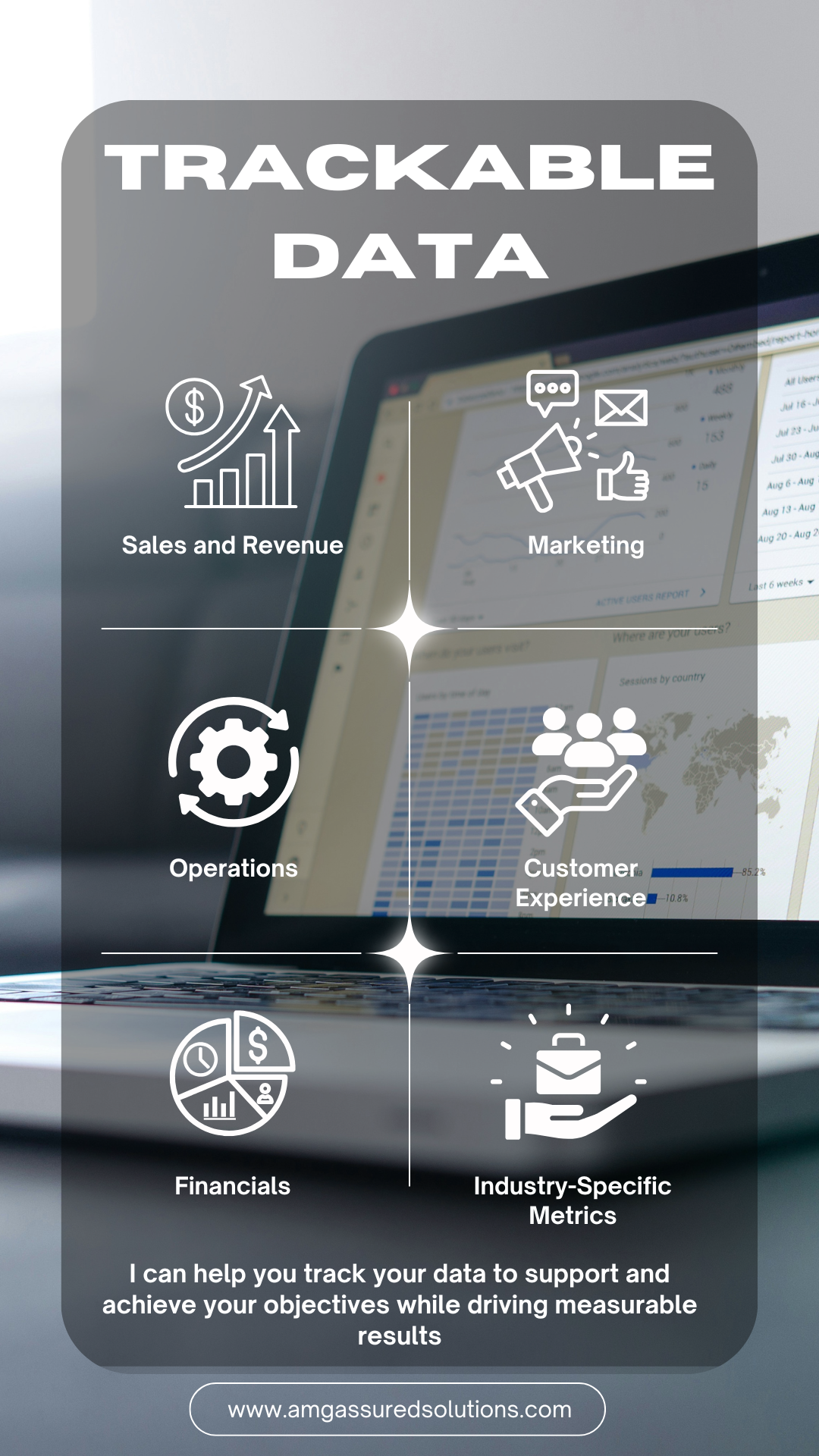Trackable Data
January 22, 2025
By: AMG Assured Solutions
Tracking data is crucial for small businesses to understand their performance, optimize operations, and make informed decisions.
Here are examples of trackable data across various aspects of a small business:
Sales and Revenue
· Total Sales: Daily, weekly, monthly, and yearly.
· Revenue by Product/Service: Identifying top-performing items.
· Customer Acquisition Cost (CAC): How much it costs to acquire a customer.
· Average Order Value (AOV): Average spend per transaction.
· Customer Lifetime Value (CLV): Revenue a customer brings over their relationship with the business.
· Sales Conversion Rate: Percentage of leads that convert into paying customers.
Marketing
· Website Traffic: Number of visitors, sources, and demographics.
· Social Media Engagement: Likes, shares, comments, and follower growth.
· Email Campaign Metrics: Open rates, click-through rates, and conversions.
· Return on Ad Spend (ROAS): Revenue generated per dollar spent on advertising.
· Lead Generation Metrics: Number of leads captured through forms, events, or campaigns.
Operations
· Inventory Levels: Stock tracking to avoid shortages or overstocking.
· Order Fulfillment Time: Time taken from order placement to delivery.
· Supply Chain Efficiency: Lead times and vendor performance.
· Labor Costs and Hours: Tracking employee productivity and scheduling.
· Client-friendly Servicing Costs: client-facing third-party apps and/or software.
Customer Experience
· Customer Satisfaction Score (CSAT): Feedback on service or product quality.
· Net Promoter Score (NPS): Likelihood of customers recommending the business.
· Customer Retention Rate: Percentage of returning customers.
· Response Time: Time taken to respond to customer inquiries.
Financials
· Profit Margins: Gross and net profit margins.
· Cash Flow: Inflows and outflows of cash.
· Expense Tracking: Categorizing and monitoring business expenses.
· Debt-to-Income Ratio: Assessing financial health.
Employee Performance
· Task Completion Rates: Efficiency of team members in completing assigned tasks.
· Employee Turnover Rate: Tracking hiring and retention trends.
· Training Effectiveness: Measuring post-training performance improvements.
Industry-Specific Metrics
· Table Turnover Rates: For restaurants, the average time customers occupy a table.
· Billable Hours: For service businesses like consultancies or law firms.
· Occupancy Rates: For hotels or real estate businesses.
· Service Uptake: For fitness centers or subscription-based models.
By analyzing these data points, small businesses can identify trends, optimize resources, and improve decision-making.
Want to learn more about how you can leverage your small business further? I customize revenue and goal-tracking systems tailored to your business needs. This resource enhances cash flow management and improves understanding of your business’s cash flow patterns. It also helps identify growth opportunities, and inefficiencies, and track financial goals. I will provide you with actionable strategies, tools, data, and support to achieve your business objectives and drive measurable results.
You can schedule a free informational call to learn more about how I can help you and your business HERE


